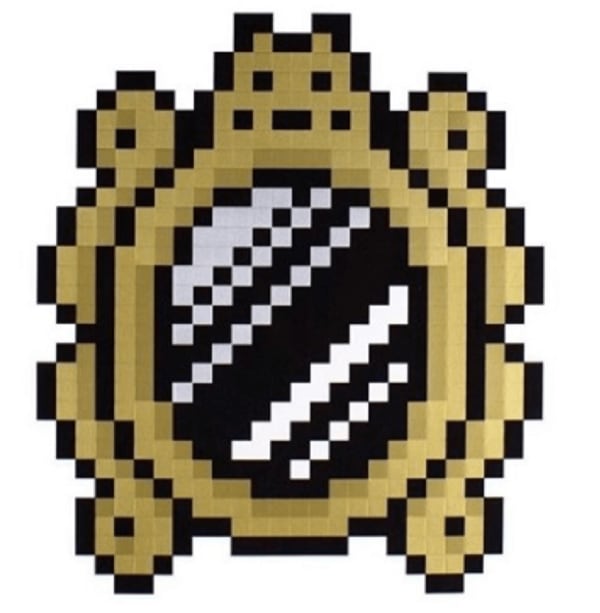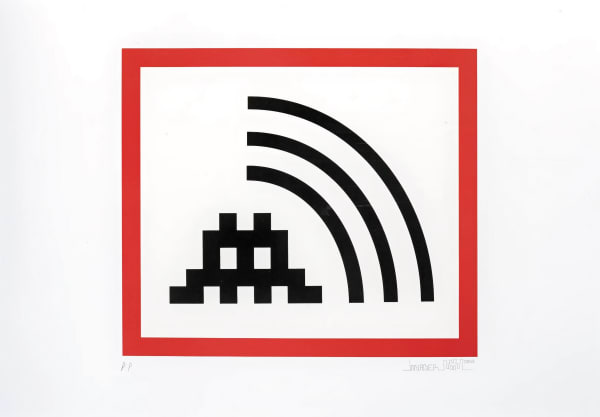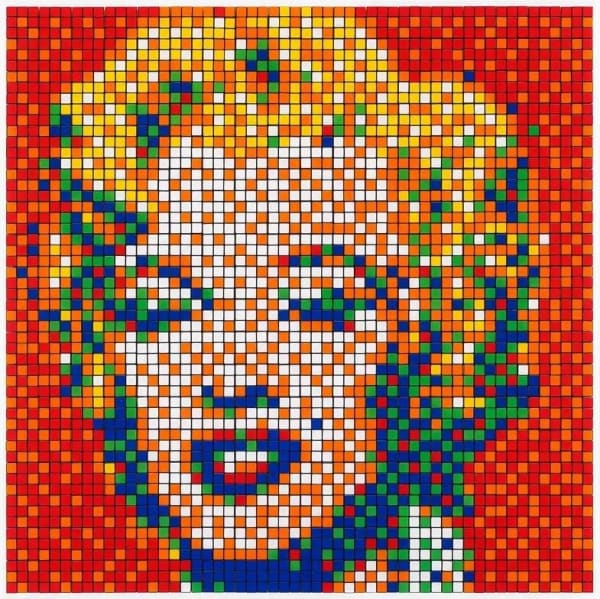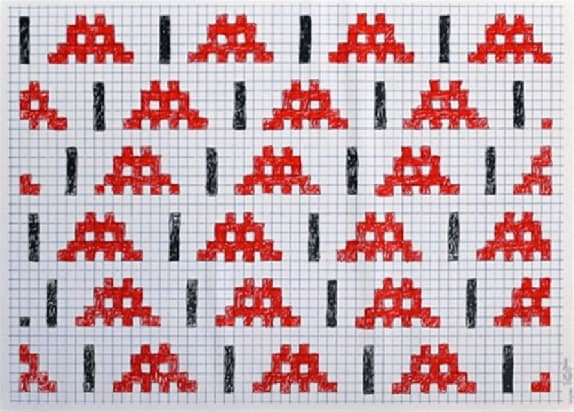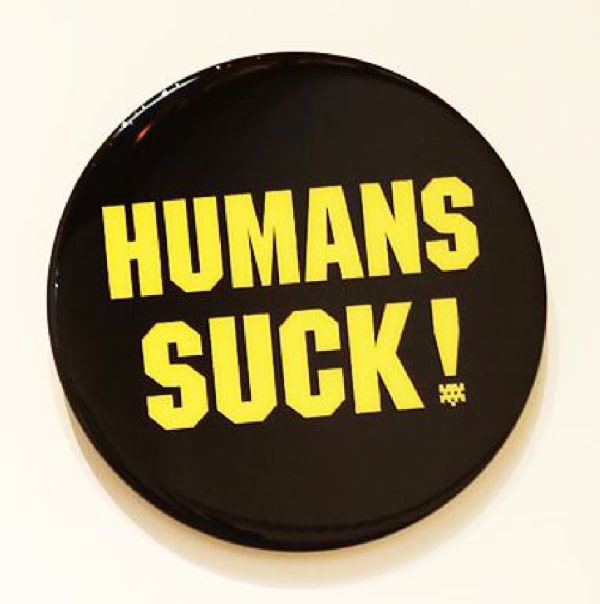Few contemporary artists have blurred the lines between street rebellion and fine-art collectibility as effectively as Invader, the anonymous French mosaicist who began “invading” cities in the late 1990s. Known for his pixelated ceramic characters inspired by the 1978 Space Invaders video game, he has turned the urban landscape into a global canvas — and, unintentionally, a marketplace.
Today, Invader’s works command six- and seven-figure prices at major auction houses like Christie’s and Artcurial, while his editions and prints attract a thriving secondary market. Behind the nostalgic charm of 8-bit aliens lies a sophisticated ecosystem of scarcity, storytelling, and sustained collector appetite.

Urban Invasions
Invader’s defining project — The Invasion — began in Paris around 1998. Armed with tiles and cement, he affixed his tiny mosaics to street corners, bridges, and high facades. Each work is meticulously cataloged with a unique code (e.g., “PA_01” for Paris), location coordinates, and a “score,” gamifying his global conquest of public space.
To date, he has installed over 4,000 mosaics across more than 80 cities worldwide, from Hong Kong and Tokyo to London, Los Angeles, and São Paulo.
These interventions are technically illegal, yet culturally celebrated. Each one is unique — tied to a specific geography and urban narrative — giving Invader’s oeuvre an authenticity that few studio artists can replicate.
Alias Works and Studio Editions
To bridge the gap between public art and private collecting, Invader began producing what he calls Aliases — studio recreations of his street mosaics. Each is hand-made using ceramic tiles, mounted on panels, and accompanied by a certificate of authenticity and an “Invader ID card.” These studio pieces allow collectors to own a physical manifestation of a public installation, complete with provenance that ties it back to the original invasion.
The artist also issues limited editions — typically prints or smaller mosaics — in numbered runs. Editions such as Invaded Cube or Home Invader have become highly sought-after, offering entry-level access to Invader’s world while maintaining strong resale performance. The limited nature of these editions — often 50 to 150 per run — has kept demand robust even as his fame has expanded.
Rubikcubism: The Studio’s Second Language
In 2005, Invader introduced Rubikcubism, a series of portraits and pop-culture images composed of hundreds of Rubik’s Cubes. The cubes’ colored faces create a low-resolution pixel effect, transforming icons like Marilyn Monroe, Batman, and The Mona Lisa into blocky, kaleidoscopic mosaics.
This innovation reinforced Invader’s identity as both conceptual artist and craftsman, expanding his appeal beyond urban art circles to fine-art collectors drawn to his wit, technical precision, and visual nostalgia.
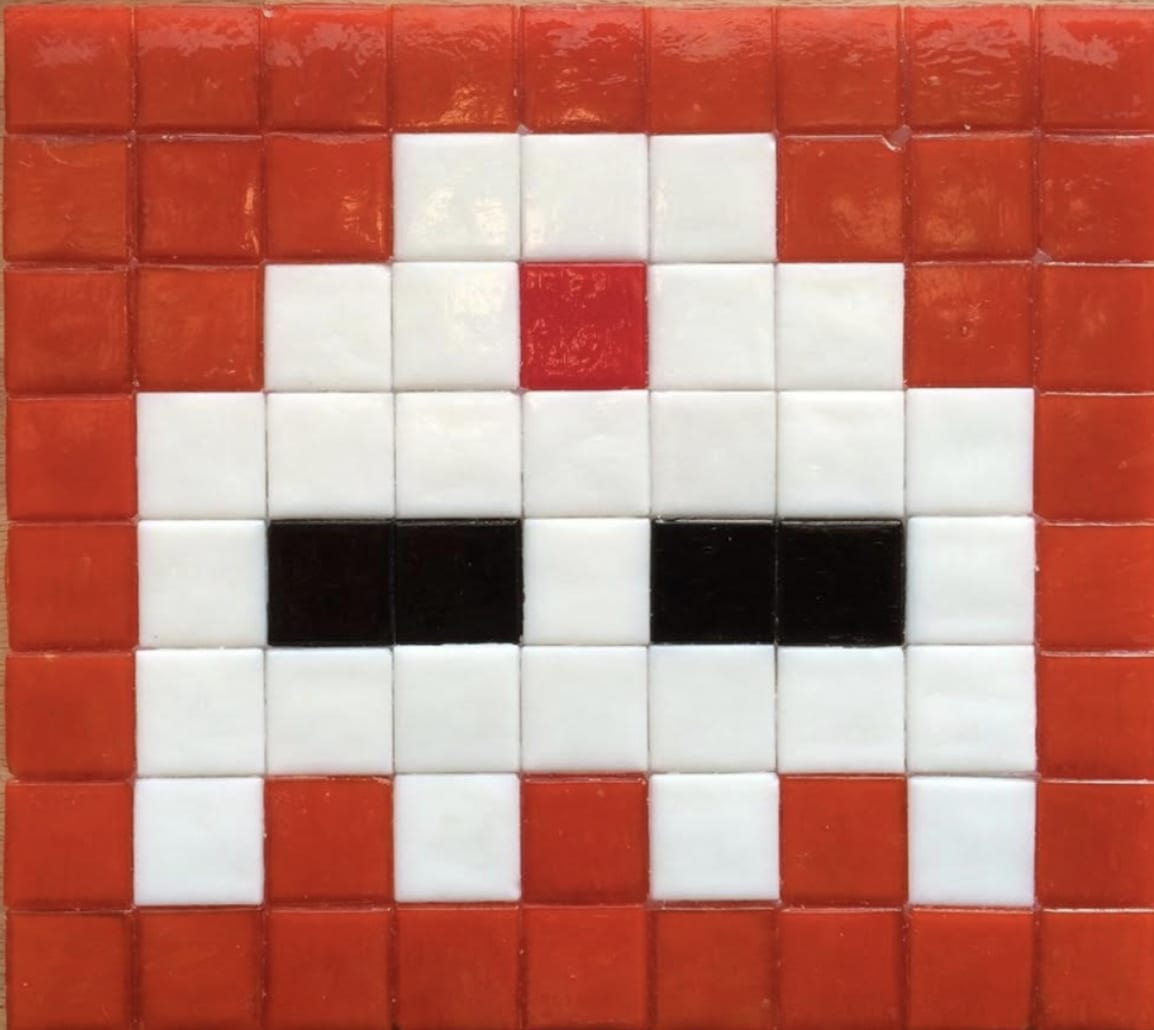
From Street to Sotheby’s: Invader in the Art Market
Auction Performance and Record Sales
Invader’s transition from street artist to blue-chip collectible has been striking.
-
In 2020, an alias of a Tokyo mosaic sold for over $1.2 million at auction.
-
His large mosaic Vienna (2008) fetched €356,200 (≈ $398,000) at Artcurial.
-
His works regularly appear at Christie’s, Bonhams, and Phillips, with consistent six-figure hammer prices for larger mosaics and Rubikcubism pieces.
According to market analysts at FairArt and MyArtBroker, Invader’s five-year print market growth has averaged +16% annually, even with fluctuations tied to the broader street-art sector.
While total auction turnover peaked around €3 million in 2019–2020, the artist’s long-term performance remains steady, showing resilience where trend-based artists often falter.
The Appeal: Why Collectors Stay Hooked
Scarcity and Storytelling
Unlike mass-produced prints, each alias or Rubikcubism work carries a narrative. Every piece references a specific location or theme, giving it both visual and conceptual rarity. The artist’s global “scoreboard” system — meticulously tracking his invasions online — lets collectors participate in a shared mythology.
This interactive element fuels sustained enthusiasm. Owning an Invader is not just owning an artwork; it’s holding a piece of an ongoing game.
Editions: Entry Points and Enduring Value
For those priced out of six-figure mosaics, Invader’s editions offer accessibility without diluting brand prestige.
Limited-run prints, small ceramic editions, and invasion maps (which chart where each mosaic is installed) often retail initially for a few thousand dollars, but many have doubled or tripled in value on the secondary market.
These editions maintain steady demand thanks to:
-
Strong design continuity with his street works.
-
Small print runs (often under 100).
-
Direct connection to his invasion narrative.
Even in market slowdowns, Invader’s editions tend to hold value — a sign of enduring collector interest rooted in both affordability and cultural cachet.
Cross-Generational Nostalgia
Part of Invader’s staying power lies in the emotional resonance of his imagery. For Gen X and Millennial collectors, his work evokes childhood memories of early video games; for younger buyers, it aligns with the visual grammar of digital culture and NFTs.
In an era when art, gaming, and street culture increasingly intersect, Invader’s pixel aesthetic feels both timeless and future-proof.

Market Dynamics and Collector Strategy
Factors Driving Value
-
Provenance — Works tied to iconic invasions (Paris, London, Tokyo) or early-career mosaics tend to outperform.
-
Iconography — Classic 8-bit characters and pop-culture crossovers (e.g., Star Wars, Super Mario) attract strong bidding.
-
Scale and Rarity — Larger, complex mosaics or unique Rubikcubism portraits often exceed estimates.
-
Authenticity — Documentation and Invader ID cards are critical; unverified street extractions rarely achieve strong resale.
Risks and Considerations
-
Volatility: While long-term trends are positive, year-to-year auction volume can fluctuate sharply (the print market contracted by ~50% in 2022).
-
Legality and condition: Street-installed works can’t always be legally sold or preserved.
-
Market saturation: As awareness grows, collectors must discern between high-impact pieces and derivative editions.
That said, Invader’s market fundamentals remain solid, supported by institutional recognition and consistent global demand.
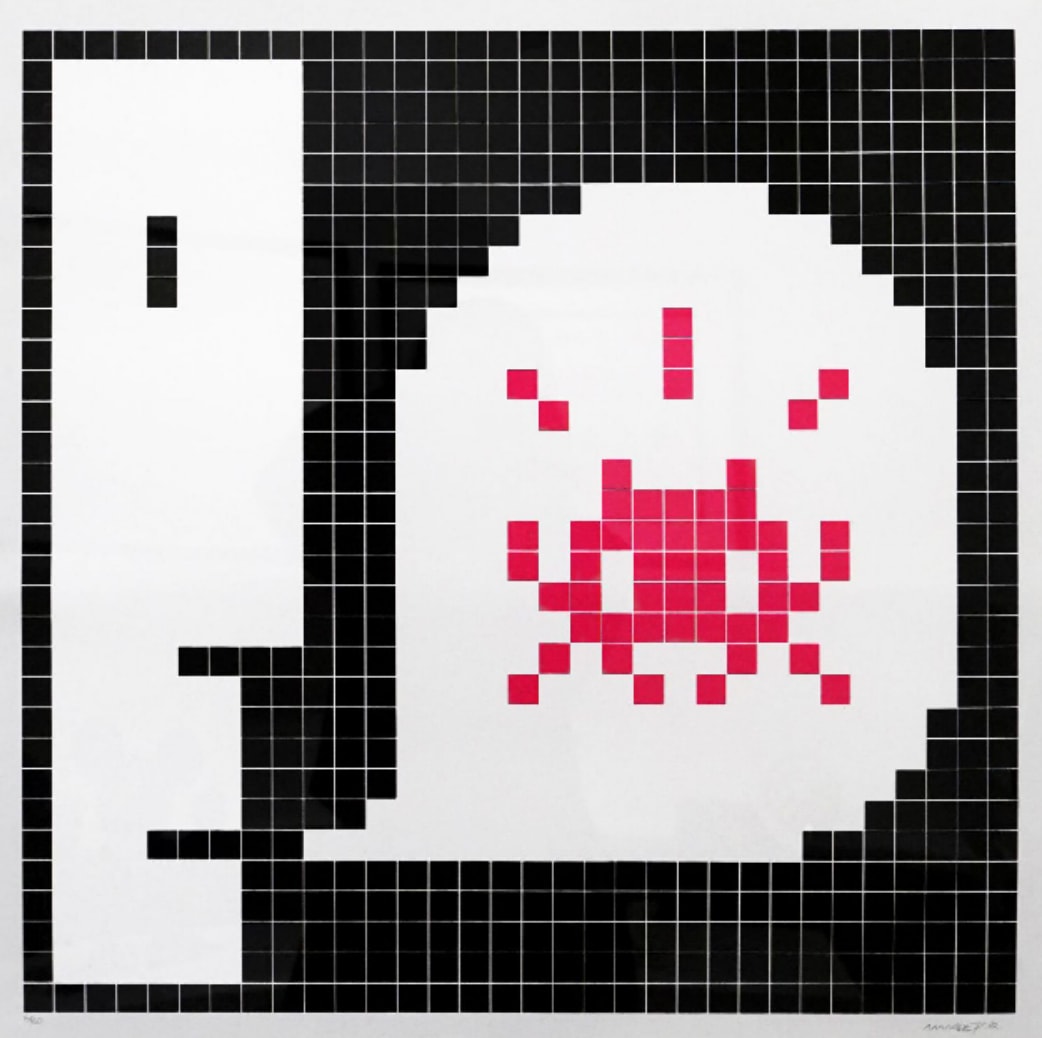
The Future: Why Invader Still Matters
Invader’s appeal extends beyond price charts. His art operates on multiple levels — visual play, cultural commentary, and urban archaeology. In a time when art often exists on screens, he insists on physical interaction with real-world environments.
Collectors view him as both innovator and preservationist: an artist who captures the nostalgia of early digital culture while grounding it in tangible, handcrafted form. His continued global “invasions” — meticulously documented online — ensure that his story, and thus his market, remains dynamic.
With major exhibitions, limited editions, and consistent collector enthusiasm, Invader’s trajectory looks less like a fleeting street-art fad and more like an enduring chapter in the evolution of contemporary pop art.

For more information on current Invader availabilities please email us directly info@guyhepner.com or give us a call at (212) 226-8680.


